1 + x
1 + x + x2
1 + x + x2 + x3
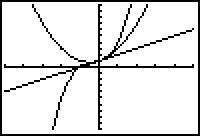
The graphs appear to coincide when x is between -0.5 and 0.5.

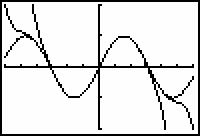
The partial sums appear to converge to y = sin x.
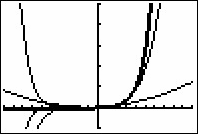
[-10,10,1] x [-50,250,50]
As more terms are added, the interval where each partial sum matches ex widens.
f(-0.5)
![]() 0.60653
0.60653
p(-0.5) = 0.625
f(0.5)
![]() 1.6487
1.6487
p(0.5) = 1.625
In each case, the values of the function and the approximating polynomials are close.
Letting f(x) = ln(1 + x), the table below lists the coefficients of the fifth-order Maclaurin polynomial.
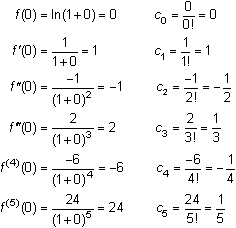
The fifth-order Maclaurin polynomial
![]() approximates f(x) = ln(1 + x) for values of x close to 0.
approximates f(x) = ln(1 + x) for values of x close to 0.
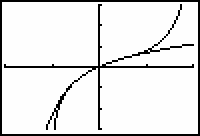
[-2, 2, 1] x [-3, 3, 1]
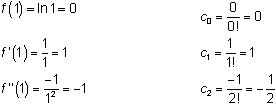
![]() is the second-order Taylor polynomial for ln x centered at 1.
is the second-order Taylor polynomial for ln x centered at 1.

[0, 3, 1] x [-3, 1, 1]
1 - (x - 1) + (x - 1)2 is the second-order Taylor polynomial for 1/x centered at 1.
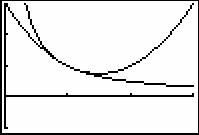
[0, 3, 1] x [-1, 3, 1]
The interval of convergence appears to be (-1,1).

[-2, 2, 1] x [-2, 2, 1]
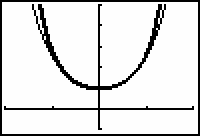
[-2, 2, 1] x [-1, 5, 1]
©Copyright 2007 All rights reserved. | Trademarks | Privacy Policy | Link Policy